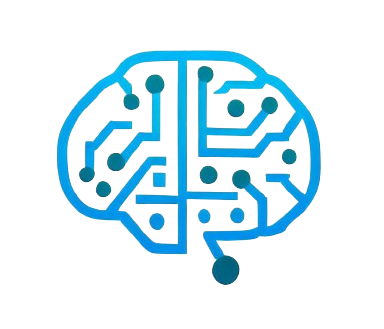The retail sector has changed dramatically with the advent of technology, particularly the integration of machine learning (ML). Machine learning algorithms can process vast amounts of data to extract information that is beyond human analysis. This has significant implications for the customer experience, which is a critical success factor in the retail industry. Machine learning enables retailers to provide personalized service, optimize store operations, and improve product recommendations, enhancing the overall shopping experience for customers.
Personalization With Predictive Analytics
One of the best benefits of ML in retail is the ability to predict a customer’s next move, often before the customer knows it. With these statistics, retailers can create personalized recommendations, dynamically adjust prices, and even predict the optimal time to approach customers with offers. This level of personalization not only improves the customer experience but also increases loyalty because customers feel understood and valued on an individual level.
Imagine receiving a curated selection of clothing options based on your style preferences and past shopping habits, or being notified of a flash sale on an item you were considering just as you were ready to make a purchase. These scenarios are a reality in stores using predictive analytics through ML. Such algorithms can transform vast data sets into useful information, ensuring that every marketing message or product offer hits home with the target audience.
Machine learning further enables retailers to fine-tune their personalization efforts through A/B testing and real-time feedback loops. By comparing the results of different personalized strategies, retailers can constantly refine their approach to meet changing customer desires. As preferences change and new trends emerge, machine learning algorithms can adapt, ensuring the relevance and effectiveness of personalization.
 To achieve optimal levels of personalization, retailers must have a holistic view of each customer. This requires combining data from various interaction points, both online and offline, to create a complete customer profile. ML algorithms can synthesize information from in-store interactions, online purchases, and even customer interactions to form a 360-degree view of shopping habits.
To achieve optimal levels of personalization, retailers must have a holistic view of each customer. This requires combining data from various interaction points, both online and offline, to create a complete customer profile. ML algorithms can synthesize information from in-store interactions, online purchases, and even customer interactions to form a 360-degree view of shopping habits.
The retail industry can use ML not only to personalize the shopping experience but also to prevent potential problems before they affect the customer. Predictive analytics can identify anomalies in the supply chain that could lead to inventory shortages, or identify patterns that indicate the need for additional customer support. By proactively addressing these issues, retailers can avoid customer disruption while maintaining a smooth and satisfied journey from discovery to purchase.
Optimizing Store Operations
For brick-and-mortar retailers, one of the obvious applications of machine learning is the optimization of store layouts. Sophisticated algorithms analyze shoppers’ movements within the store, identifying hotspots and areas that are frequently overlooked. With this data, retailers can rearrange their store layouts, ensuring that high-margin products or items they wish to push are placed in high-traffic areas. Such strategic positioning can increase visibility and drive impulse purchases, resulting in higher overall revenue.
In terms of inventory management, machine learning is invaluable. Retailers can move beyond historical sales data to incorporate a variety of factors that influence demand, including weather patterns, local events, and economic indicators. An ML-powered inventory system can dynamically respond to these variables, ordering stock just in time to meet anticipated demand spikes and prevent overstock or stockouts, all while keeping storage costs down. By ensuring that the right products are available at the right time, retailers provide a service that meets customer expectations and minimizes frustration due to unavailable products.
Another key operational element where machine learning has a significant impact is workforce management. The scheduling of staff has traditionally been based on crude approximations and manager intuition. Machine learning changes that by providing more precise predictions of customer footfall, allowing retailers to staff their operations optimally. Retailers can now ensure that enough staff is available during peak times to assist with high customer volume while avoiding unnecessary labor costs during slower periods. This leads not only to cost savings but also to improved customer service, as customers spend less time waiting and more time engaging with knowledgeable staff who are available when and where they are needed most.
Beyond these applications, machine learning can also help with energy management through smart systems that adjust lighting, heating, and cooling based on store occupancy and external weather conditions. This not only reduces the store’s carbon footprint but also ensures a comfortable shopping environment that encourages customers to spend more time and, potentially, more money.
The optimization of store operations with machine learning also extends to loss prevention. Cutting-edge ML algorithms can be trained on surveillance video feeds to detect potential shoplifting or other unusual activities. This allows for a proactive approach to securing assets, alerting staff to potential issues before they escalate, rather than relying solely on after-the-fact review of incidents.
Real-time analytics provide a live dashboard of the retail operation’s health. Managers and decision-makers can instantly assess the effectiveness of promotions, the impact of external events, and the general success of individual stores. This empowers them to make informed decisions swiftly, further streamlining operations and enhancing the customer experience.
Development of Customer Service Using Chatbots and Virtual Assistants
Chatbots developed using machine learning are incredibly adept at learning from customer interactions. Every request they handle and every response they generate increases their ability to handle future requests more efficiently. As a result, the quality of customer service improves over time, and chatbots gradually become more sophisticated in understanding and responding to the various needs of customers and the nuances of their requests. This self-improving, ML-powered chatbot feature delivers a smoother and more satisfying customer experience in every encounter.
In addition to providing quick responses, machine learning-powered chatbots can personalize the customer experience at scale. They can instantly access a customer’s purchase history, preferences, and past interactions to provide contextual assistance. For example, if a customer has previously purchased certain products, a chatbot can proactively offer support related to those products or offer additional items, thus providing a service that feels personalized and thoughtful.
Virtual assistants with natural language processing (NLP) capabilities further improve customer service. They can interpret and respond to customer inquiries made in natural spoken language, making interactions more human and understandable. Because these systems better understand intent and sentiment, customers can engage in complex dialogues with virtual assistants as if they were talking to a human representative, covering everything from inquiring about product features to handling returns or filing complaints.
A significant advantage of chatbots and virtual assistants is their availability during non-working hours. Retailers can now offer 24/7 support, meeting today’s customer expectations for immediate and ongoing service. This effectively increases the retailer’s ability to stay in touch with customers, meeting their needs promptly and mitigating the potential for frustration that may arise from having to wait for a store to open or for staff to appear.
The introduction of chatbots frees up customer service people to deal with more complex and sensitive issues. Instead of dealing with routine matters, HR can focus on adding value where it’s most needed, such as solving serious customer problems or providing personalized shopping advice. This division of labor not only increases operational efficiency but also increases customer service agents’ job satisfaction by elevating their roles to focus on more meaningful and nuanced interactions.
Despite the many benefits, the deployment of chatbots and virtual assistants requires a careful and customer-centric approach. Retailers must ensure that these digital aids are seamlessly integrated into the overall customer service system and that customers can easily escalate issues to representatives when necessary. Furthermore, the emotional intelligence of these AI systems is still not on par with human understanding and empathy; thus, their limitations should be recognized and their role should be seen as a complement to human interaction rather than a complete replacement.
